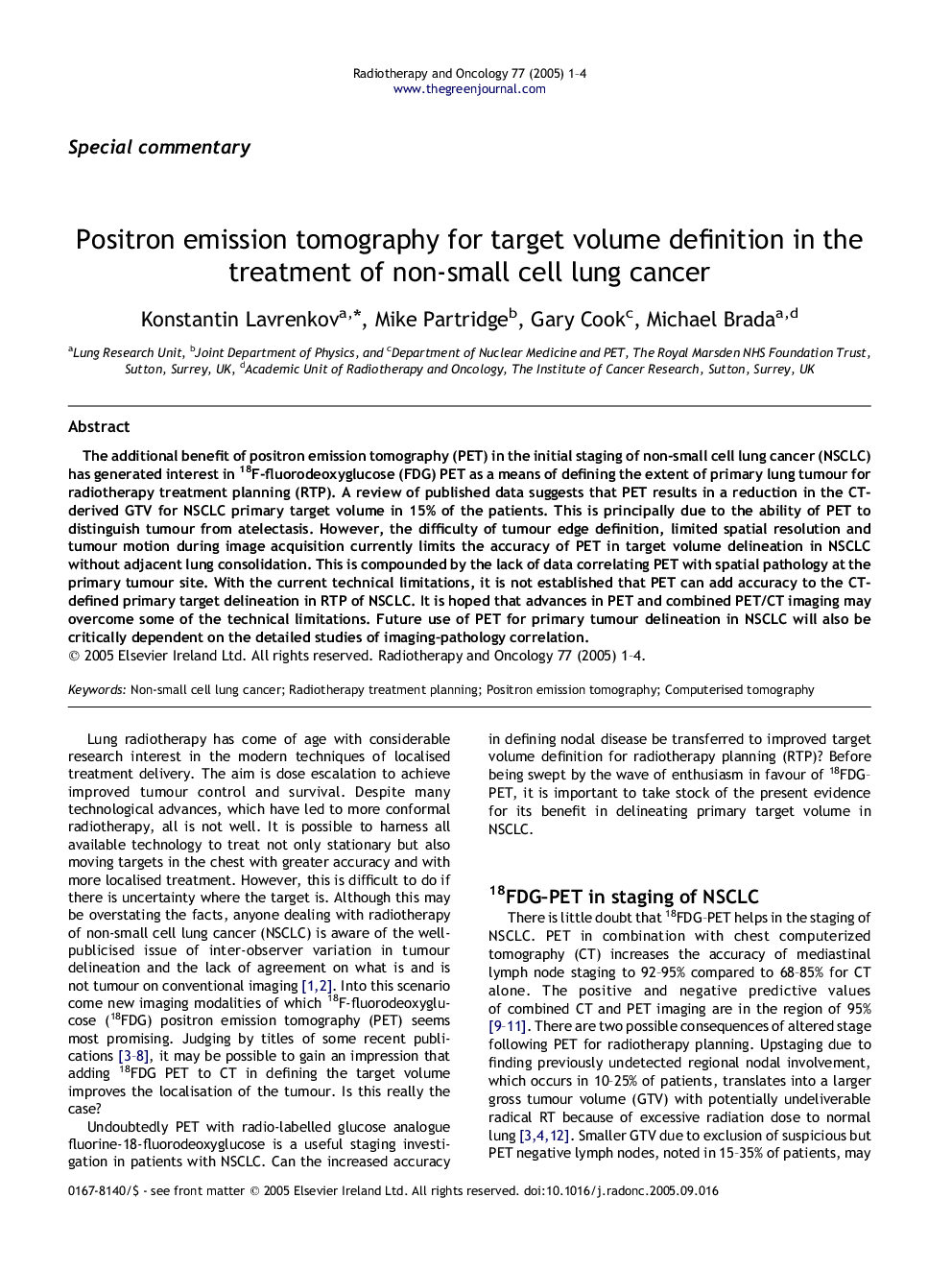| Article ID | Journal | Published Year | Pages | File Type |
|---|---|---|---|---|
| 10920177 | Radiotherapy and Oncology | 2005 | 4 Pages |
Abstract
The additional benefit of positron emission tomography (PET) in the initial staging of non-small cell lung cancer (NSCLC) has generated interest in 18F-fluorodeoxyglucose (FDG) PET as a means of defining the extent of primary lung tumour for radiotherapy treatment planning (RTP). A review of published data suggests that PET results in a reduction in the CT-derived GTV for NSCLC primary target volume in 15% of the patients. This is principally due to the ability of PET to distinguish tumour from atelectasis. However, the difficulty of tumour edge definition, limited spatial resolution and tumour motion during image acquisition currently limits the accuracy of PET in target volume delineation in NSCLC without adjacent lung consolidation. This is compounded by the lack of data correlating PET with spatial pathology at the primary tumour site. With the current technical limitations, it is not established that PET can add accuracy to the CT-defined primary target delineation in RTP of NSCLC. It is hoped that advances in PET and combined PET/CT imaging may overcome some of the technical limitations. Future use of PET for primary tumour delineation in NSCLC will also be critically dependent on the detailed studies of imaging-pathology correlation.
Keywords
Related Topics
Life Sciences
Biochemistry, Genetics and Molecular Biology
Cancer Research
Authors
Konstantin Lavrenkov, Mike Partridge, Gary Cook, Michael Brada,
